REXENTERTAINMENT
“The phrase that I have come to believe best sums up what the documentary film can most hope for, is to ‘undermine the simplicities’. The challenge is to present a much needed sense of flawed humanity not stereotypes.”
Rex Bloomstein
Rex Bloomstein has made over 150 single films, television documentaries and series and, in January 2012, presented his first radio documentary, Dying Inside for Radio 4. He is currently developing a number of further projects.
For full details about his work, follow the links below.
Tom Keating came to my attention because of a book he had written with Geraldine and Frank Norman about his life as art restorer and, above all, as one of this country’s most accomplished art forgers - he claimed to have faked more than 2,000 paintings by over 100 different artists. The BBC acquired the rights to the book, which gave access to Tom. We filmed whilst he was out on bail and awaiting trial for allowing a fake Samuel Palmer he had painted to be auctioned. The fake Palmer had been bought by the Leger Gallery for several thousand pounds.
Tom was a working-class man who fell in love with the Old Masters such as Rembrandt and Titian, became a painter and restorer and developed an abiding contempt for the art world, which he saw only as ‘parasitic’. He took his revenge by painting as he called them in cockney rhyming slang, ‘Sexton Blakes’: fakes.
I asked him to paint some ‘sextons’ for the film – he agreed, asked me to choose and then set about it. He painted a ‘Renoir’, a ‘Munch’ and a ‘Samuel Palmer’. As he painted, he cried, felt the masters’ spirits, showed me how to age a painting by heating it over an electric fire, smoked endlessly, talked of Jane, one of the loves of his life, joked, laughed, was pensive and thoughtful about faking as an art in itself. He talked about his own paintings and described himself as essentially a provocateur – exposing the gallery system as “utterly rotten and the art world for what it really was.” A marvellous character. The trial was called off because of his weak heart.
The actor Jack Hedley was one of a number of celebrities asked to choose a piece of music, a film, a work of art, a place, etc that they liked or even loved. This was also an opportunity to get know something of their lives. Jack had become famous for his role in the drama series Colditz and had actually served in seven wars - there was more to Jack Hedley than most people realised.
The opening commentary of this film written by the Producer, Roger Mills was thus:
“Three working class heroes pumping iron to compete in the Mr United Kingdom contest of 1974. These are men who sculpt their own bodies into a work of art by prodigious eating and ferocious exercise. The reward for those years of sweat and the thousands of pounds lavished on a protein diet laced with health pills and anabolic steroids is a mere couple of minutes drenched in baby oil and posing to an admiring audience.”
The contestants who did their routines set to the music of the ‘Magnificent Seven’ were Peter Simpson from Mexborough in Yorkshire, whose ambition was to have the best physique in the country; Wally O’Malley posturing in front of a cracked mirror in the Irish club in Warrington and admitting on camera how the game was about taking illegal steroids; and Bill Richardson, whose motto was “You train through pain to gain.” Pete won.
Set in the context of the explosive of issue of immigration in the 1970s, this Inside Story film reconstructs the case of Mohammed Akram, a bus driver living in Bradford, who was born in Pakistan and whose wife Rafiqa had been refused entry into the UK. Mohammed had appealed against this decision and elicited the help of the United Kingdom Immigrants Advisory Service in his attempt to be re-united with her. This is the only time I ever used actors in any of my documentaries. I did it because I was not allowed to film Mohammed’s actual hearing. Mohammed won his case.
A follow up film to All In the Day, The Candidate which revealed the process of choosing a Labour candidate in Braintree in Essex. This film portrayed Keith Kyle’s attempt to win Braintree for the Labour Party.
I first filmed Keith Kyle in 1972 as part of my All In A Day series. In this follow-up film, Keith attempts to win the 1974 election for Labour in Braintree. The strain, the pain and the pressure emerges in a sometimes desperate attempt of this obviously clever man to ‘press the flesh’ and win the seat. Sadly to no avail.
All In a Day was a ground-breaking series of verite studies of British
life which, after careful research, selection and preparation, reversed the
normal approach to filmmaking by focussing on one event taking place on a
single day.
A number of camera teams using 16mm were deployed to capture all the key
moments and key characters as events unfolded and reached a climax. An early example of observational documentary filmmaking with minimal
scene-setting commentary, All In A Day was an exhilarating way to make
films with a potentially classic structure and a built-in beginning, middle and
end. Other films included The Royal Visit, The Orange Parade, The Emigrants, The Sealed Knot, The Move and The News.
The Launch began the first series and I then directed three more - The Auction, The City and The Candidate.
I decided on 10 camera teams to record what happened in the city
of Sheffield on September 3rd 1973. Research had led us to discover a
number of people for whom this day was important, in fact a turning point in
their lives: a middle-aged couple were getting married, the expectant
birth of a baby, the funeral of a man whom the priest did not know and the
retirement of a steel-worker after 55 years. We also had camera teams with the
police, with the local newspaper, in the council chamber, in the local
abattoir. Other events happened randomly such as the bread lorry that
demolished the living room of a couple on holiday.
This is the day Braintree Labour Party selected their parliamentary candidate from four
men who had to appear before the Party’s
selection committee. As the event unfolds Keith Kyle, a BBC television
presenter emerges as the man the delegates think has the best chance of
unseating the conservatives. I deployed five camera teams to capture the day’s
events.
All In a Day was a groundbreaking series of verite studies of British
life which, after careful research, selection and preparation, reversed the
normal approach to filmmaking by focussing on one event taking place on a
single day.
A number of camera teams were deployed to capture all the key
moments and key characters as the event actually unfolded and reached a climax.
An early example of observational documentary filmmaking with minimal
scene-setting commentary, All In A Day was an exhilarating way to make
films with a potentially classic structure and a built-in beginning, middle and
end. Other films included The Royal Visit, The Orange Parade, The
Emigrants, The Sealed Knot, The Move and The News.
The Launch began the first series and I then directed three more - The
Auction, The City and The Candidate.
‘Pitching for a an account’ is the theme of this Advisors film and featured Kim Mukajee, who ran a creative ad agency called MMR. How does the agency persuade the manufacturer of a small ‘kit’ car called The Clan that they’re the agency to go with? Kim’s ‘spiel’ runs the gamut of ad talk, psychology, examples of different campaigns, including one for swimming pools, and tapping into, as Kim puts it, “all that housewives’ emotional neurosis.” In the end could they produce a sufficiently macho image of the car that ‘gets the business’? The answer was no.
The Advisors. A series of 30 min documentaries exploring individuals and companies whose trade is advice. In this case Public Speaking.
‘The object of oratory is not truth but persuasion’. It begs the question, are great speakers born not made? Or can speaking be taught? This episode from The Advisors centres on a company specialising in turning a tongue-tied gruffer into a fluent communicator. The star of this three-day crash course is Malcolm from the Milk Marketing Board who, beginning with the dullest speech imaginable, ends up the consummate politician.
Having a lovely Time - experiencing with well known people their favourite haunts, tastes and pastimes
A series that took personalities to their favourite haunts. In this case, I asked the actor and writer, Colin Welland, where he would choose to have a lovely time. His answer: Blackpool. So we found three generations all staying in the same boarding house - four likely lads, a young family with children and an elderly couple. Colin got angry, amused and bewildered in turn at the complete banalisation of this great working class playground of his youth. The awe-inspiring Blackpool Tower had become an Apollo Space Ride and Fortes were planting plastic trees on the famous pier! Blackpool - the Las Vegas of the North in all its gaudy vitality. We ended the film with everyone on a tram as the famous Blackpool lights were switched on to the music of Reg Dixon at the organ.
“Colin Welland’s return to Blackpool put up a marvellously sad and funny television essay about the value for money obtainable in the Rimini of the North.
Everything seems to be done to prevent visitors from asking for more than what is cheaply profitable.
‘These people, and rightly so’, said the Mayor, referring to the big business interests that are taking over the place, ‘are looking for easy money’.
They certainly got it. The four young furniture makers from the North-East had some incredible dialogue with Welland. They came to Blackpool ‘for a good time’ defined as drinking 15 pints of beer a day. There was nothing else to do in their hometown, they explained. Then why did they go to Blackpool to do what they did all the year round ? Why not try somewhere where they could get something else ?
‘Well, we all stick together, don’t we’. Pitiful.
A rather good-looking young mother explained why they don’t go to Ibiza. ‘We don’t like the food’.
‘But how do you know if you’ve never been there?’
‘Well, it’s not what you know, is it?’
An old radiant gent complained about the modernisation of Blackpool (perhaps they had in mind the Merrie England bar on the pier, which has an artificial oak-tree in its middle): ‘We’re having what they choose to give us’. But they admitted they were on their 30th visit, and would be back.
Of the multitude of sights brought back by this vivid film, perhaps the most pitiful was of the crowd of mostly old holidaymakers in the enclosed Winter Garden, still wrapped in anoraks and mackintoshes, baring their dentures in quavering choruses of the songs being sprayed at them by the mighty organ: ‘It’s a Sin to Tell a Lie’. I thought of Captain Scott’s comment on the South Pole, ‘Great God, this is an awful place’.
Welland didn’t think it so bad, though not as good as it had been when he used to enjoy himself in much the same way as the four inebriated woodworkers.
But he has too much imaginative sympathy not to see that the poor are victims. The quality of being able to imagine more than what is available is being steadily held down by the puritan and philistine minority that still controls the lives of the huge majority.” - THE DAILY MAIL, Peter Black
“The English, it has been remarked, take their pleasures sadly. This might have served as a text for “Colin Welland at the Seaside,” first in a new series entitled Having A Lovely Time (BBC1).
The idea is for a number of more or less well-known characters to explore other people’s pleasures in which they themselves have some interest.
Colin Welland, who is in some danger of becoming the poor man’s TV Leonardo (actor, playwright, sports pundit, general pronouncer), went back to have a look at Blackpool, to see if it retained the golden glow of youthful memories.
Mr Welland, I feel sure, would regard himself in most fields as progressive. Here he stood revealed as the classic reactionary. Everything that remained exactly as he remembered it was ‘great’ or ‘smashing’. Everything that had been changed was pretty diabolical.
‘Look at that beautiful Victorian wrought-iron architecture’, he roared, in Betjeman-esque vein. An old-fashioned sing-song with ‘bags of ale’ flowing equally commanded his approval. His wrath was reserved for the up-dated facades of the Tower and pie and similar contemporary manifestations.
Personally I wouldn’t have thought you could do much to Blackpool except to improve it and anyway I doubt if the companions he chose for his Odyssey would have noticed one way or the other.
They consisted of a quartet of youths who had come to Blackpool to down 15 pints of beer a day as a change from doing it in Newcastle, a middle-aged couple who looked as if they had last enjoyed anything in 1947 and the long-suffering boarding-house keepers, Harry and Betty.
Together with the stuffed bingo players and the deck-chaired crowds seeking refuge from the gale outside, they presented a somewhat pathetic image of Britain at play.” - THE DAILY TELEGRAPH, Richard Last
“In this series-starter about the British pursuing leisure, Welland - rapidly running Parkinson a close second as the box’s best-known professional Northerner - returns to Blackpool, where he spent youthful holidays. Memory curdles a bit as he looks at it today; he gets very cross about the way Victorian wrought iron on the piers have been replaced by entry boxes. The warmth of his personality glows through the programme, though, even though boarding houses are now called ‘guest houses’ and there’s a fascinating Fellini-like ending at the end of a pier that’s worth staying through to watch.” -
This film captured a world record sale at Sotheby’s of The
Lady Blunt, one the finest Stradivarius violins ever to come on the market.
Filmed over 24 hours, five camera teams covered the buyers, the build up to the
sale, Yehudi Menhuin playing the violin for himself and the eventual winning
bidder of this fabulous instrument.
All In a Day was a groundbreaking series of verite studies of British
life which, after careful research, selection and preparation, reversed the
normal approach to filmmaking by focussing on one event taking place on a
single day.
A number of camera teams were deployed to capture all the key
moments and key characters as the event actually unfolded and reached a climax.
An early example of observational documentary filmmaking with minimal
scene-setting commentary, All In A Day was an exhilarating way to make
films with a potentially classic structure and a built-in beginning, middle and
end. Other films included The Royal Visit, The Orange Parade, The
Emigrants, The Sealed Knot, The Move and The News.
The Launch began the first series and I then directed three more - The
Auction, The City and The Candidate.
All In a Day was a groundbreaking series of verite studies of British life which, after careful research, selection and preparation, reversed the normal approach to filmmaking by focussing on one event taking place on a single day.
A number of camera teams were deployed to capture all the key moments and key characters as the event actually unfolded and reached a climax. An early example of observational documentary filmmaking with minimal scene-setting commentary, All In A Day was an exhilarating way to make films with a potentially classic structure and a built-in beginning, middle and end. Other films included The Royal Visit, The Orange Parade, The Emigrants, The Sealed Knot, The Move and The News.
The Launch began the first series and I then directed three more - The Auction, The City and The Candidate.
T
he Launch was the first of the four All In A Day films that
I made. We had eight camera teams to cover the launching of the Texaco Great
Britain, a 252,000 ton supertanker, in Wallsend, Newcastle-Upon-Tyne.
Shipbuilding was then a major industry in the North-East. By the time of the
launch there had been a strike and the Swan Hunter company was facing a loss on
its fixed term contracts. All the key characters are here – Sir John Hunter,
there was the wife of the American Vice-President of Texaco, who had never
launched a ship before, Charlie, the foreman of the yard who says at one point:
“if this doesn’t go right we’ll have a new bridge cross the Tyne.” He is
in charge of the hundreds of men whose job it was make this happen. And happen
it did. The ship stuck for two and half minutes!
The Patient is the Family was my first film. In it, I looked at the pioneering work of Dr John Howells and the Institute for Family Psychiatry that he created in Ipswich. The main thrust of Howell’s work was that the tensions within families were responsible for many of the ailments that patients presented as individuals. He maintains in the film that treating the family as a unit in itself would reveal the underlying causes of illness in a more fundamental way and lead to greater emotional understanding and potential harmony.
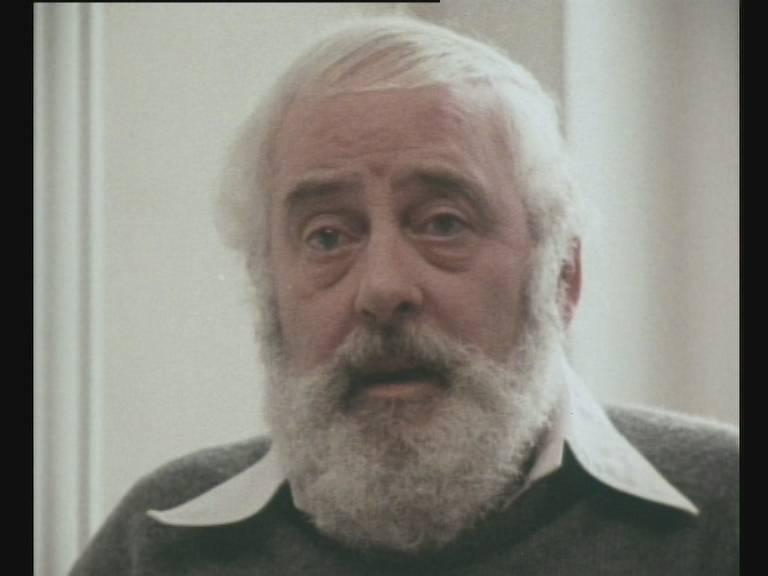 Tom Keating
Tom Keating
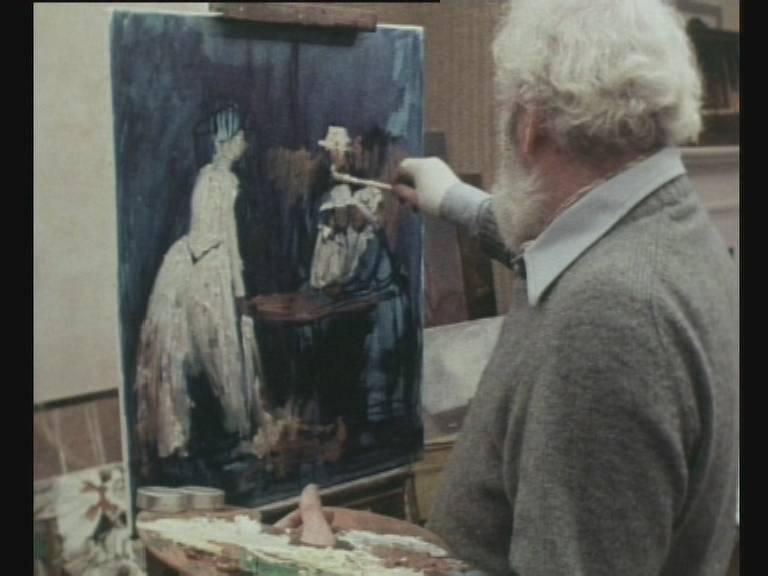 Tom painting a 'Renoir' in his studio in Dedham
Tom painting a 'Renoir' in his studio in Dedham
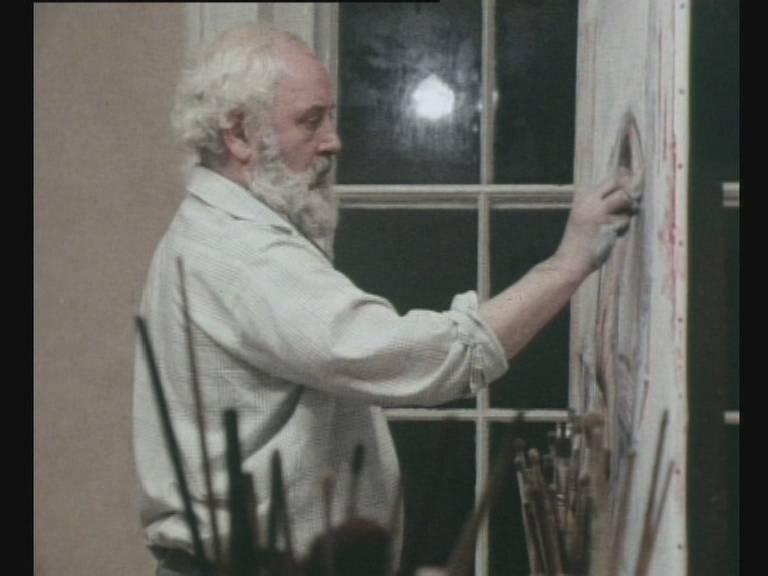 Tom painting a 'Munch' in his studio
Tom painting a 'Munch' in his studio
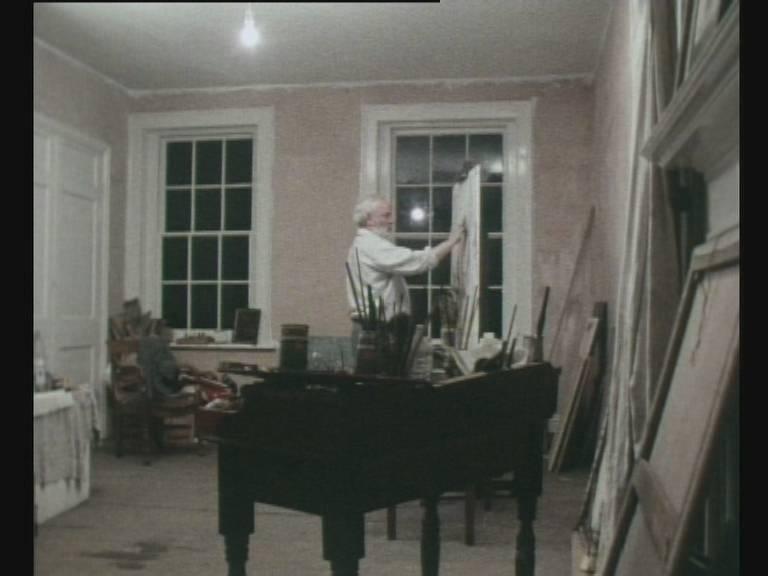 Tom in his Studio
Tom in his Studio
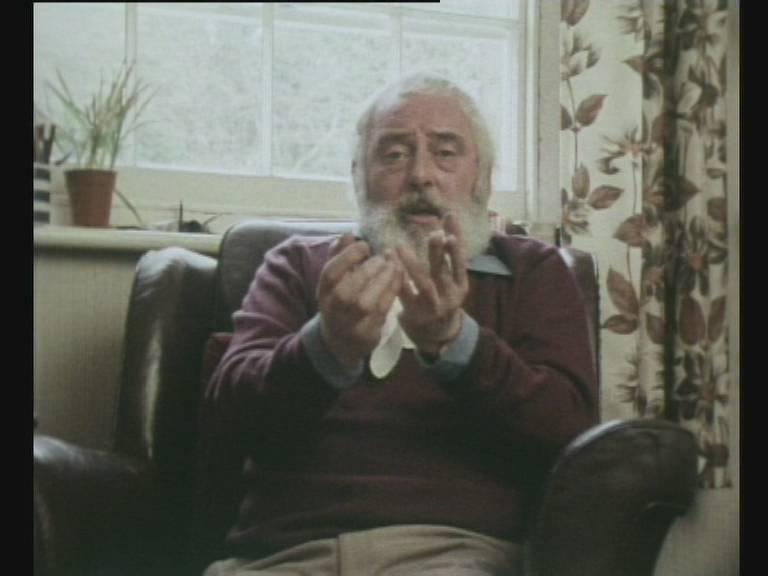 Tom in interview with Rex Bloomstein
Tom in interview with Rex Bloomstein
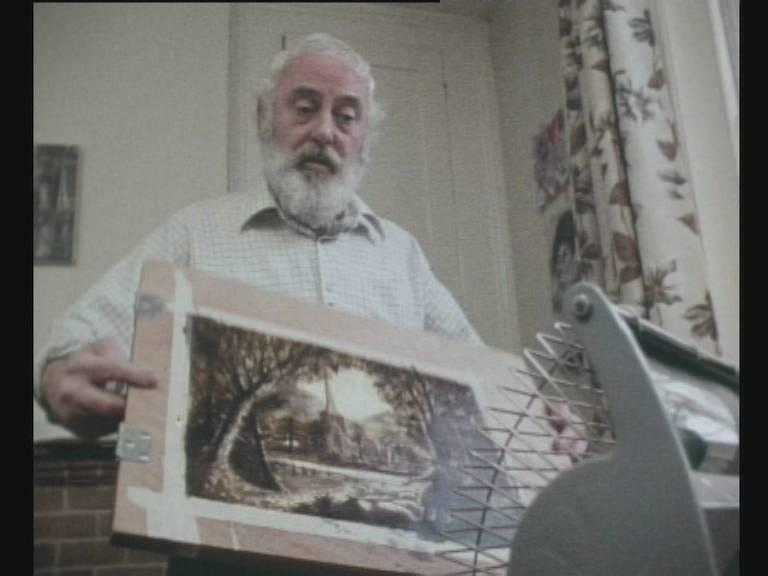 Tom 'ages' his 'Samuel Palmer'
Tom 'ages' his 'Samuel Palmer'
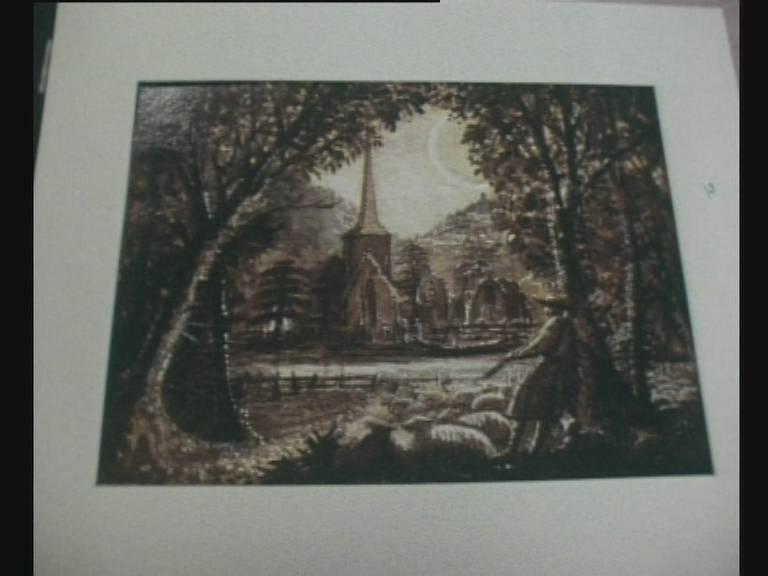 Finished version of painting in the style of Samuel Palmer
Finished version of painting in the style of Samuel Palmer
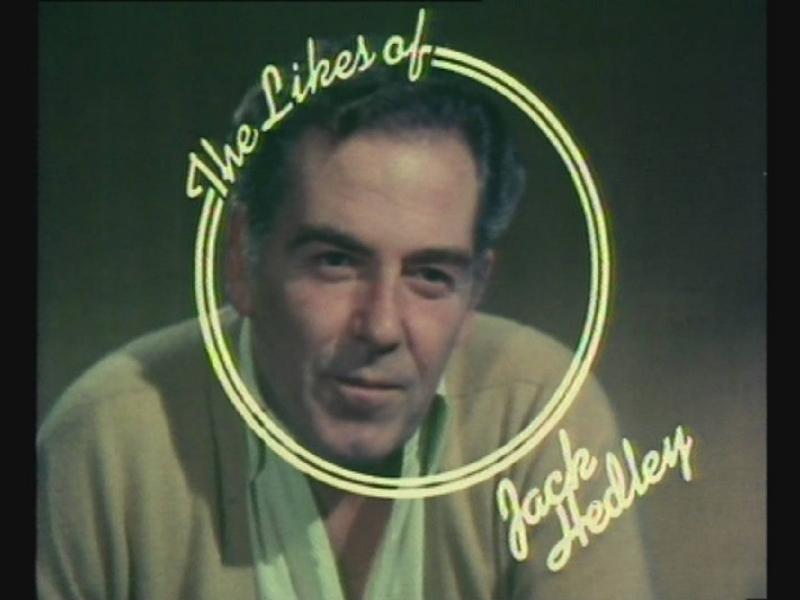 Title
Title
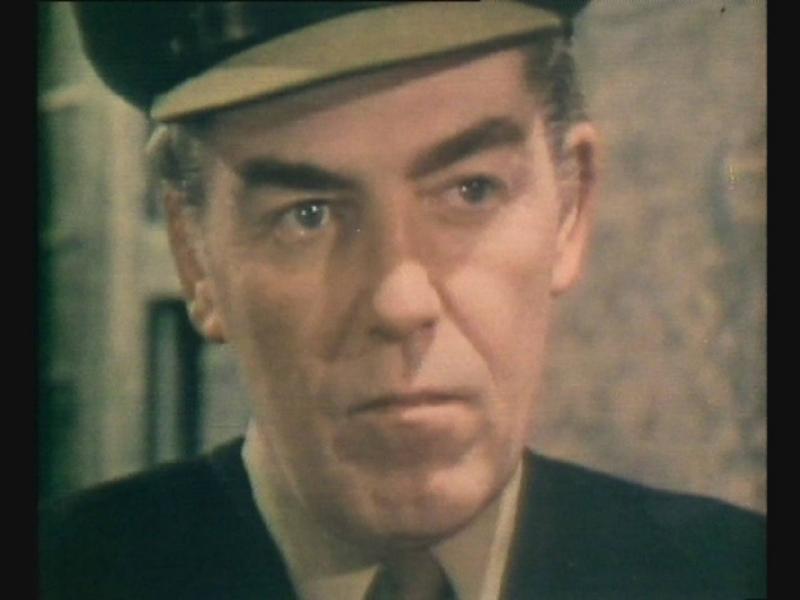 Jack Hedley in the drama series Colditz
Jack Hedley in the drama series Colditz
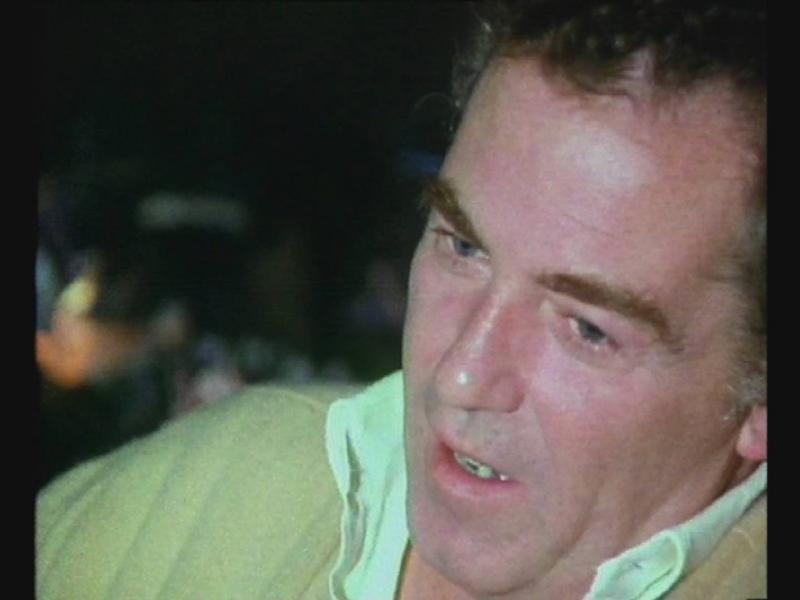 Jack in interview with Rex Bloomstein
Jack in interview with Rex Bloomstein
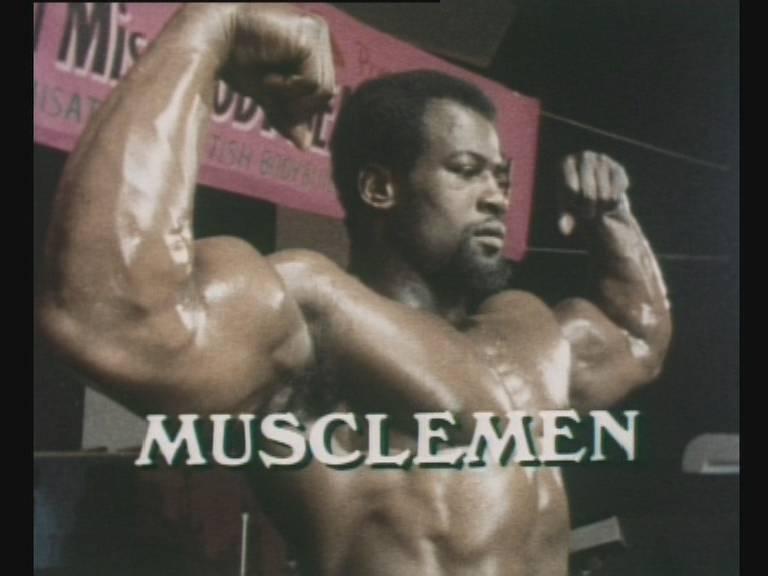 Title
Title
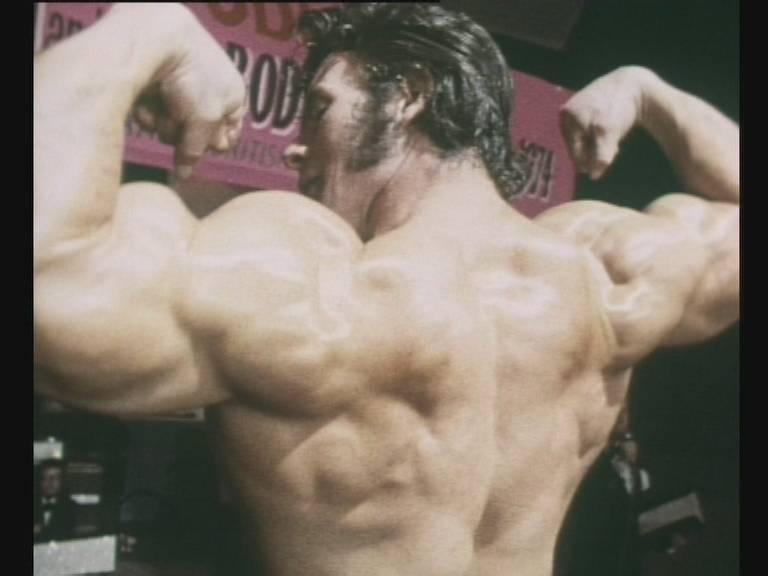 Wally O'Malley doing his routine on stage.
Wally O'Malley doing his routine on stage.
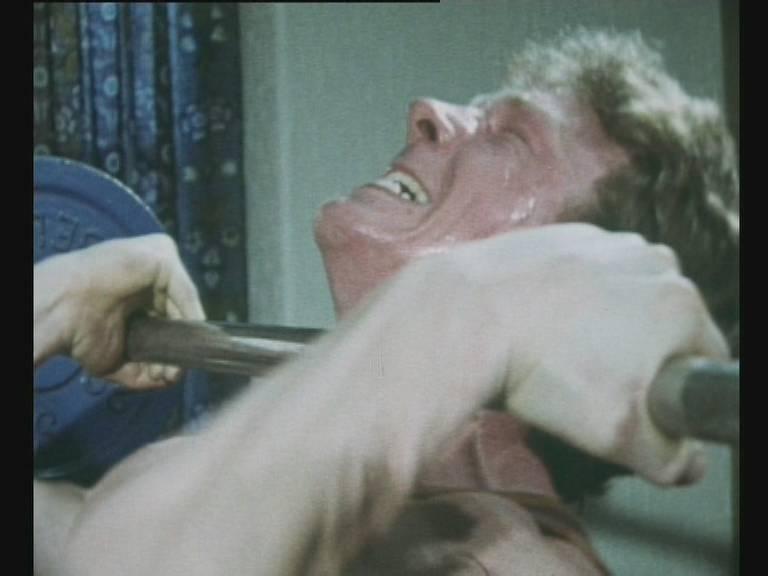 Peter Simpson training
Peter Simpson training
 Peter Simpson in competition
Peter Simpson in competition
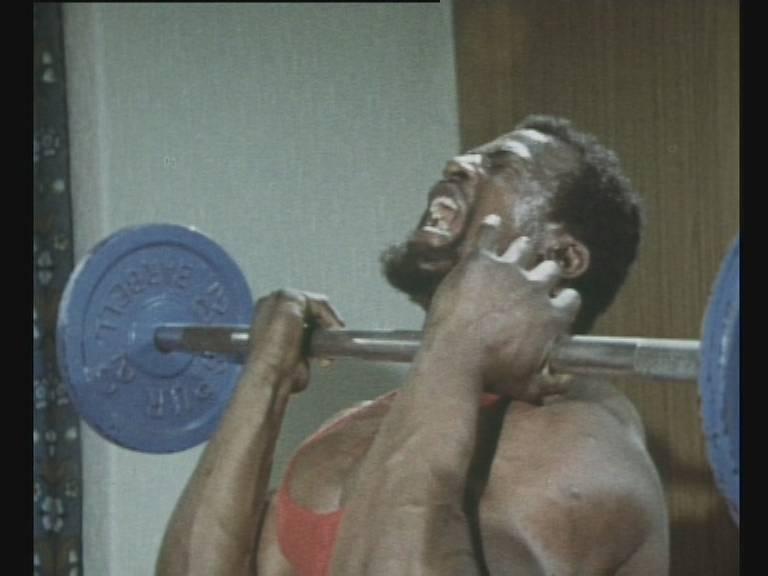 Bill Richardson training
Bill Richardson training
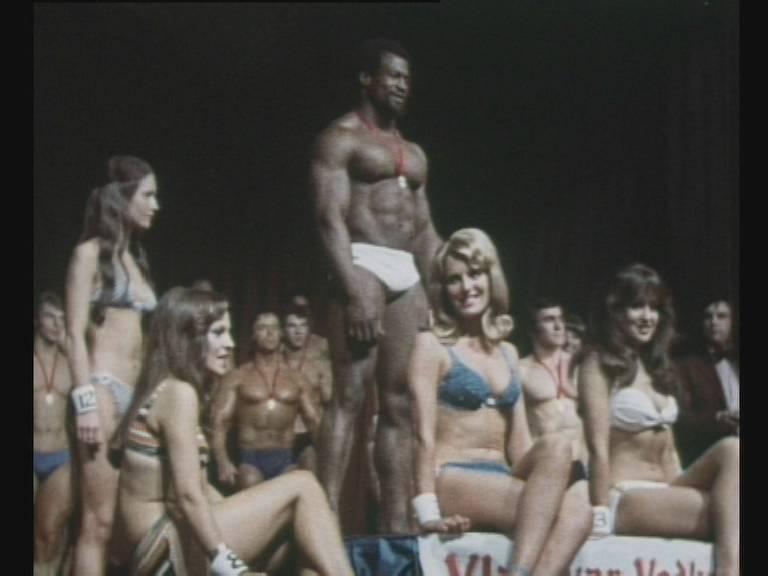 Final tableau at the Mr UK competition
Final tableau at the Mr UK competition
 Wally O'Malley in performance
Wally O'Malley in performance
 Peter Simpson - the winner
Peter Simpson - the winner
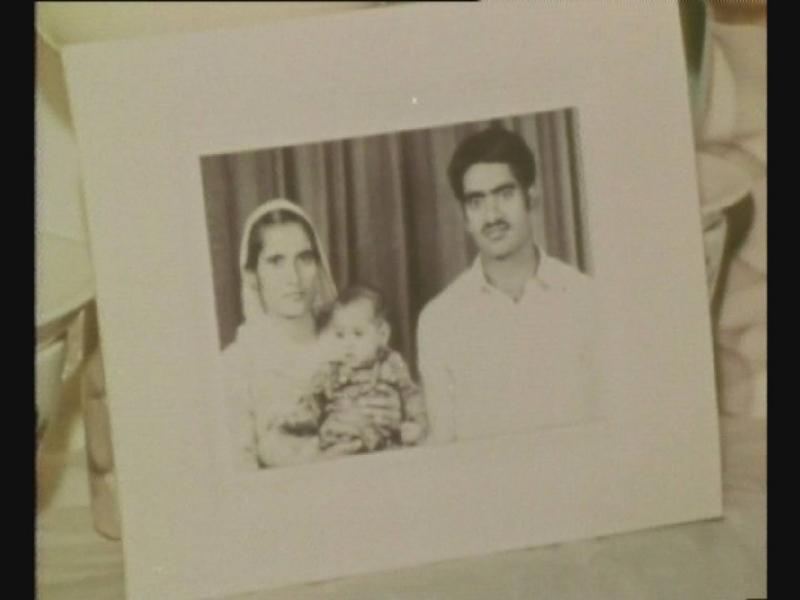 Mohammed Akram, his wife Rafiqa and their baby in Pakistan
Mohammed Akram, his wife Rafiqa and their baby in Pakistan
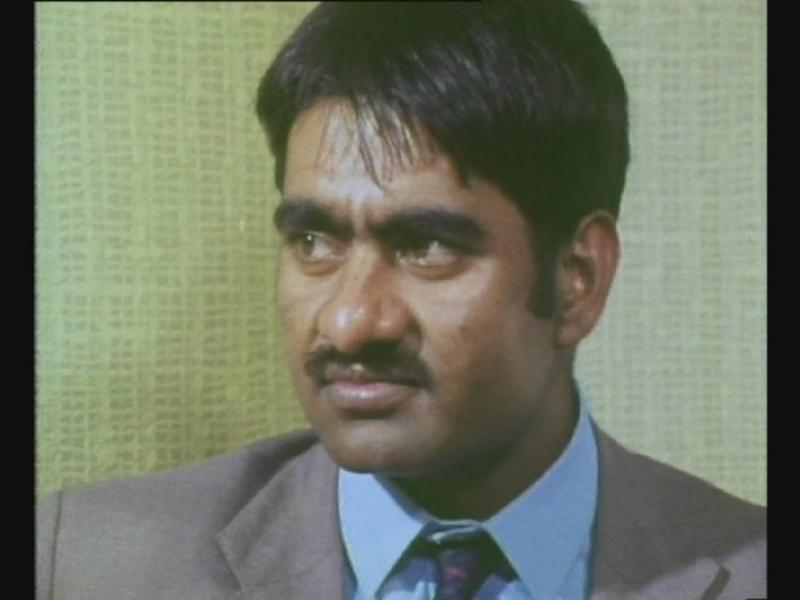 Mohammed listening at the hearing
Mohammed listening at the hearing
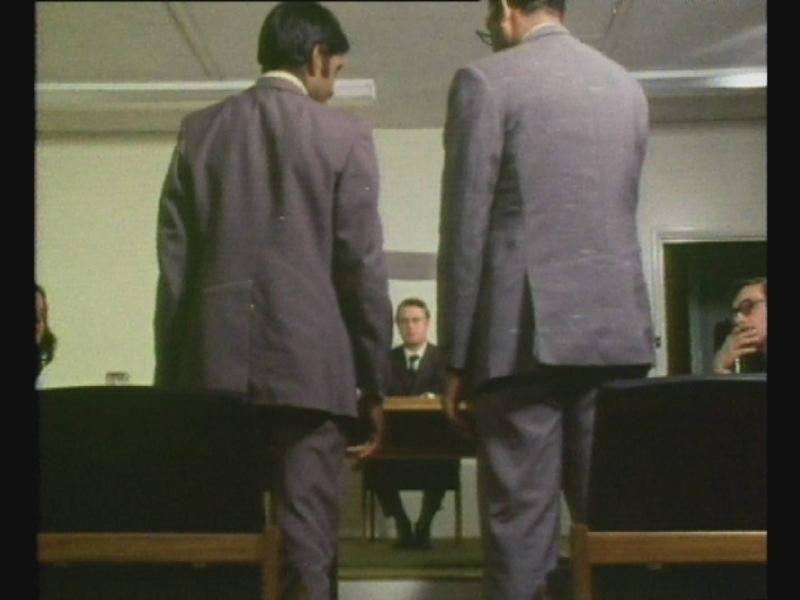 The UKIAS appeal hearing
The UKIAS appeal hearing
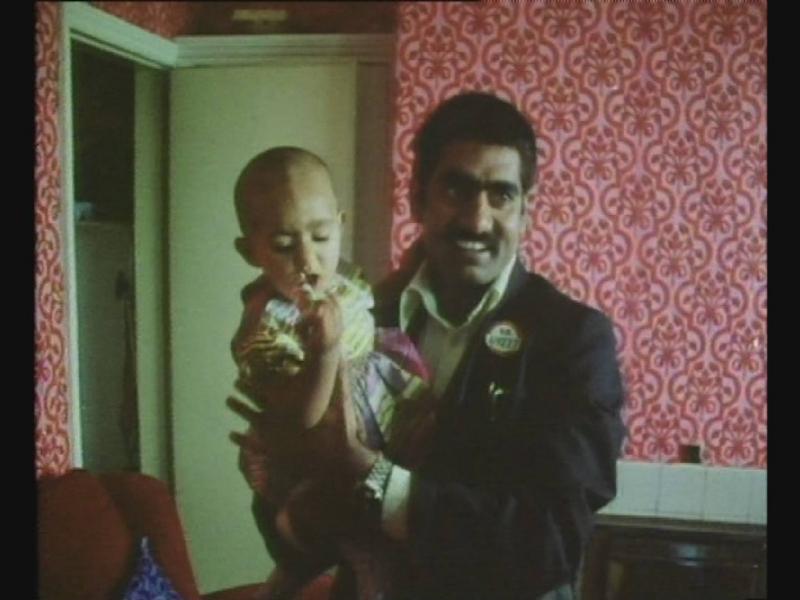 Mohammed at home in Bradford after his successful appeal
Mohammed at home in Bradford after his successful appeal
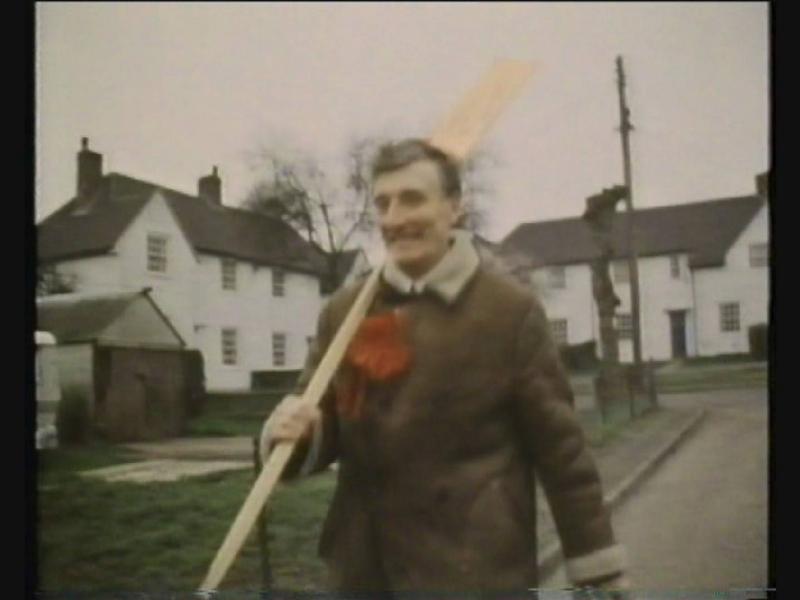 Keith Kyle campaigning for the 1974 General Election in Braintree
Keith Kyle campaigning for the 1974 General Election in Braintree
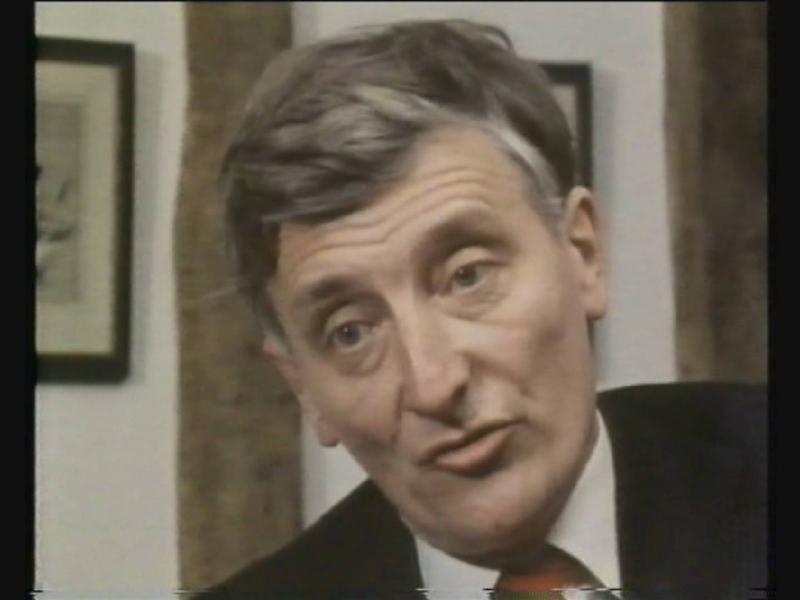 Keith in interview with Rex Bloomstein
Keith in interview with Rex Bloomstein
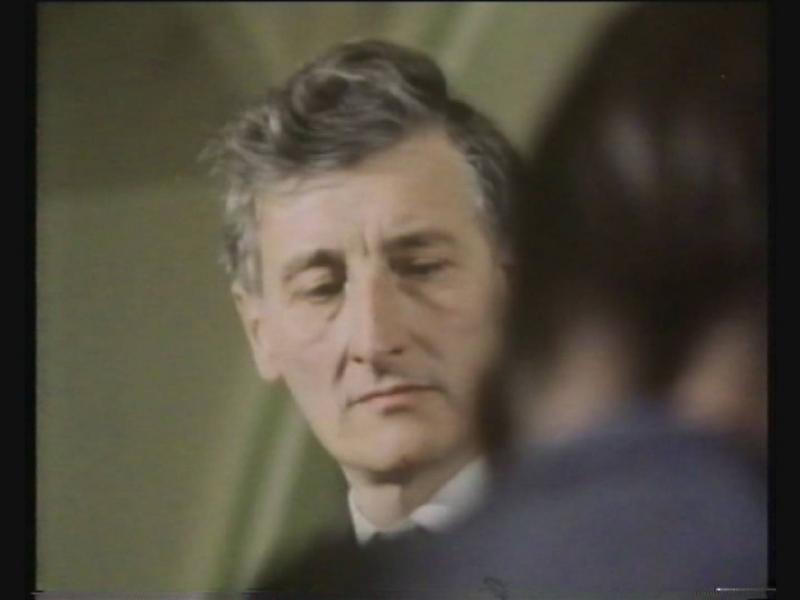 Keith watching the count as it unfolds
Keith watching the count as it unfolds
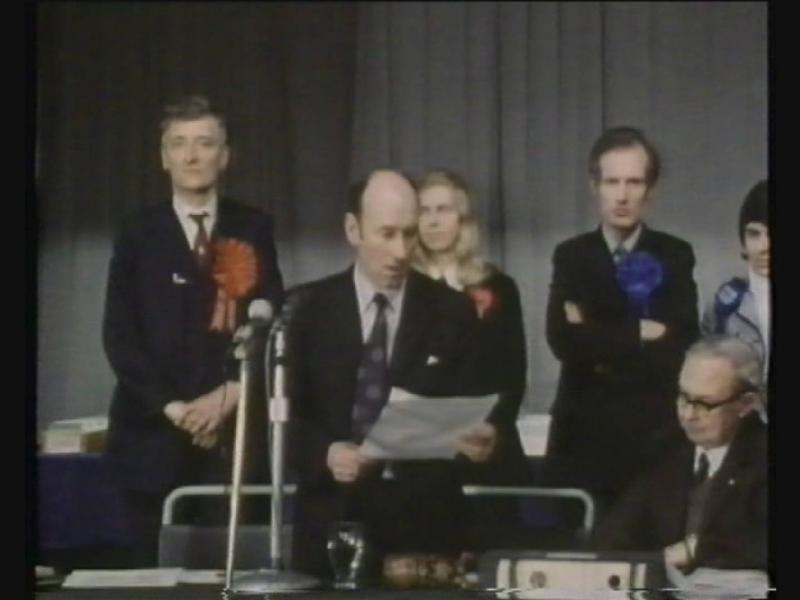 The result is announced
The result is announced
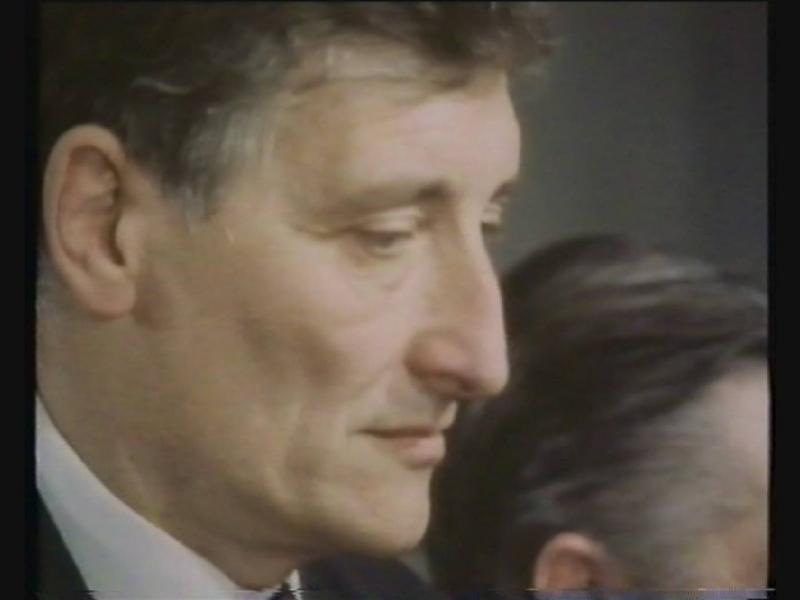 Keith lost.
Keith lost.
 Sheffield
Sheffield
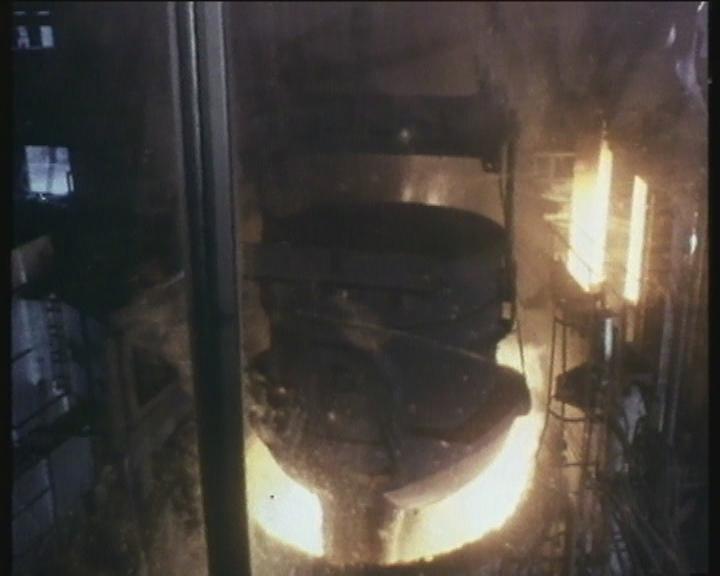 Steelworks
Steelworks
 A bread lorry which smashed into a house on that day - the owners were away on holiday.
A bread lorry which smashed into a house on that day - the owners were away on holiday.
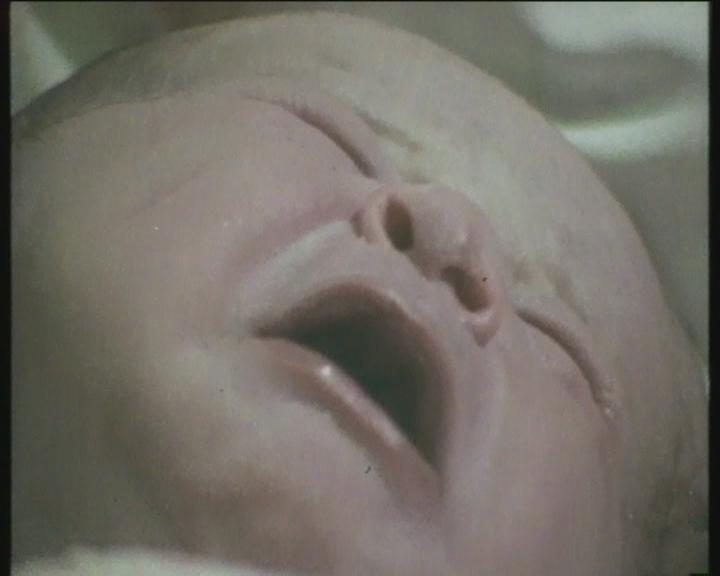 The baby born to the young couple featured in the film
The baby born to the young couple featured in the film
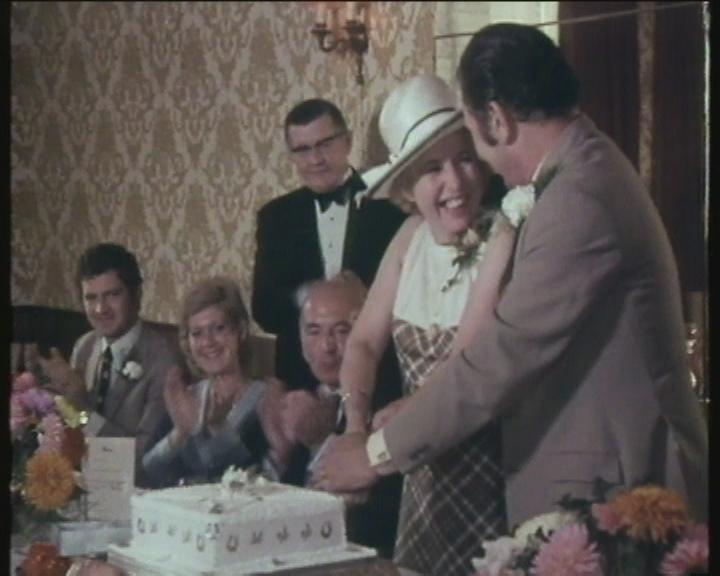 The weddng
The weddng
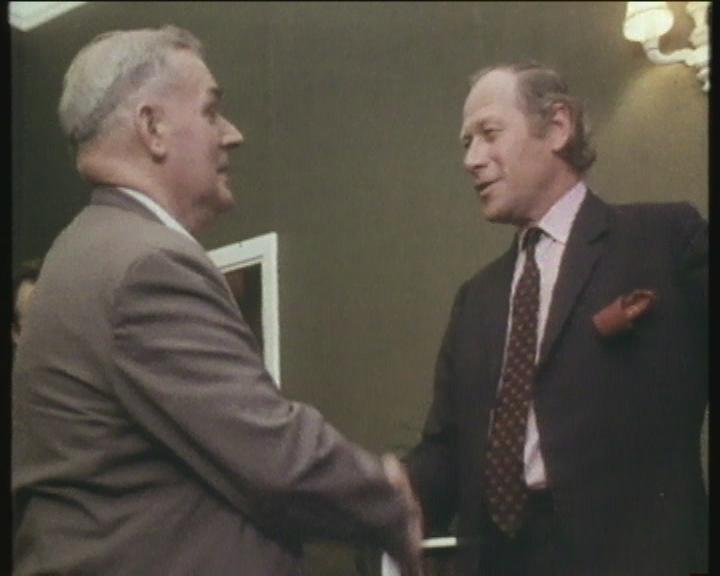 Harold and the boss
Harold and the boss
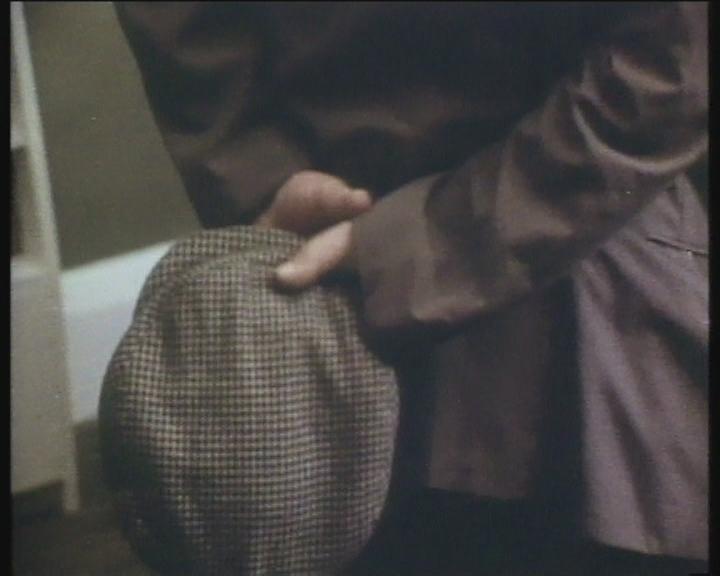
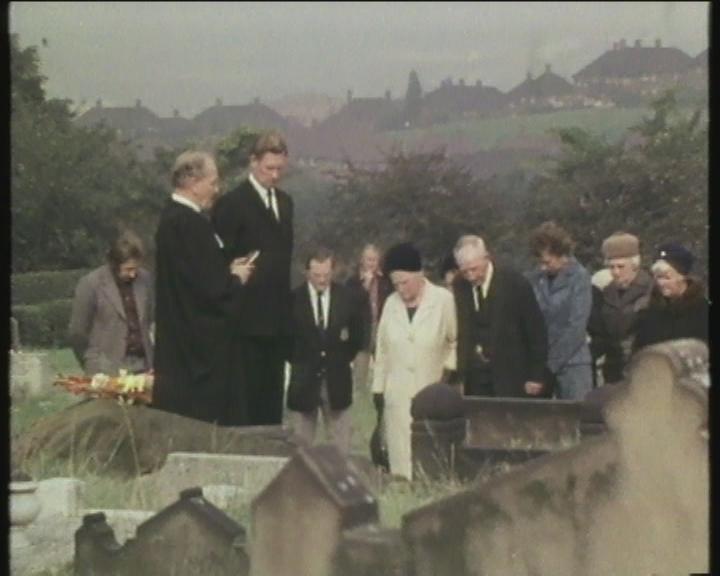 The funeral - the priest utters the words ' It wasn't my pleasure to know him'...
The funeral - the priest utters the words ' It wasn't my pleasure to know him'...
 Title
Title
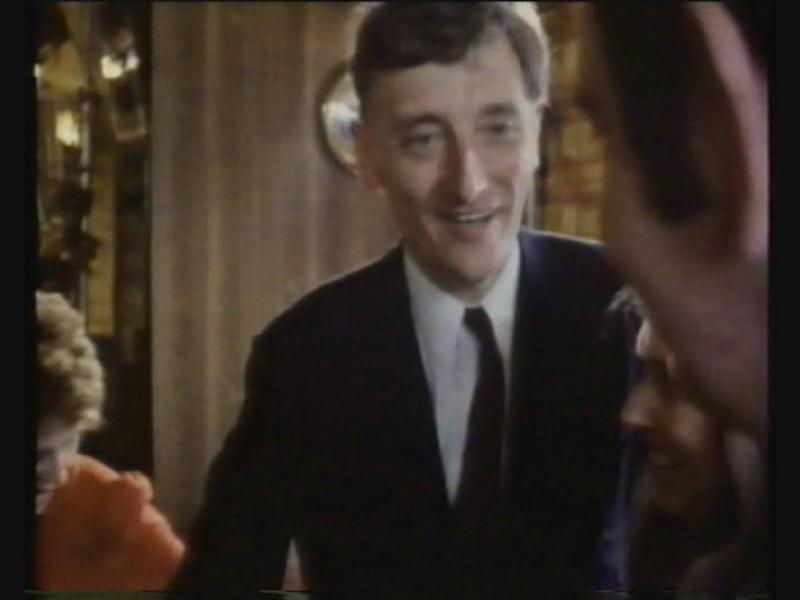 Keith Kyle
Keith Kyle
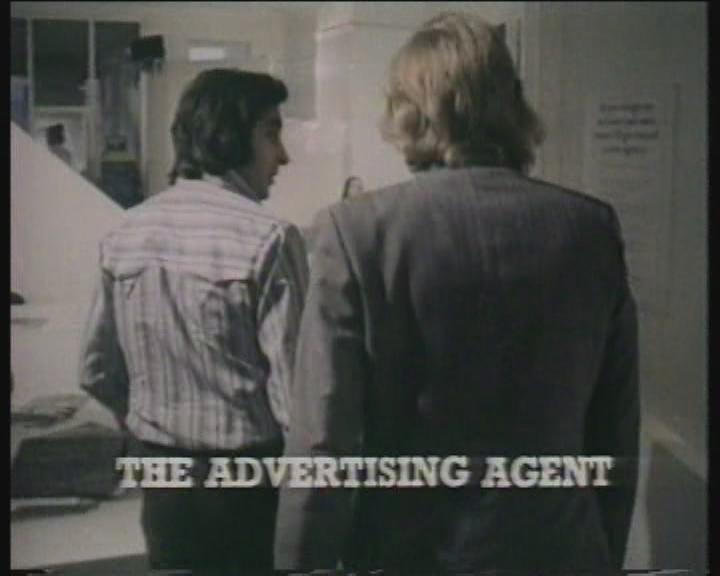
 The Clan kit car
The Clan kit car
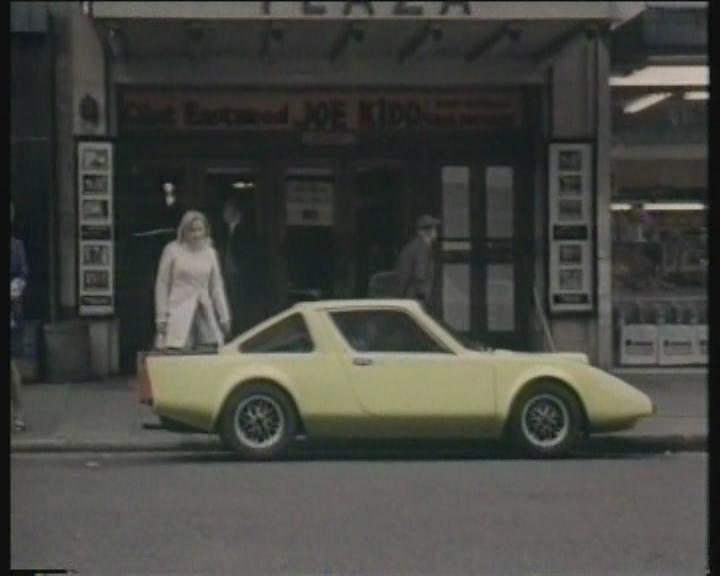 Outside the agency's HQ, above a cinema in Camden Town, North London
Outside the agency's HQ, above a cinema in Camden Town, North London
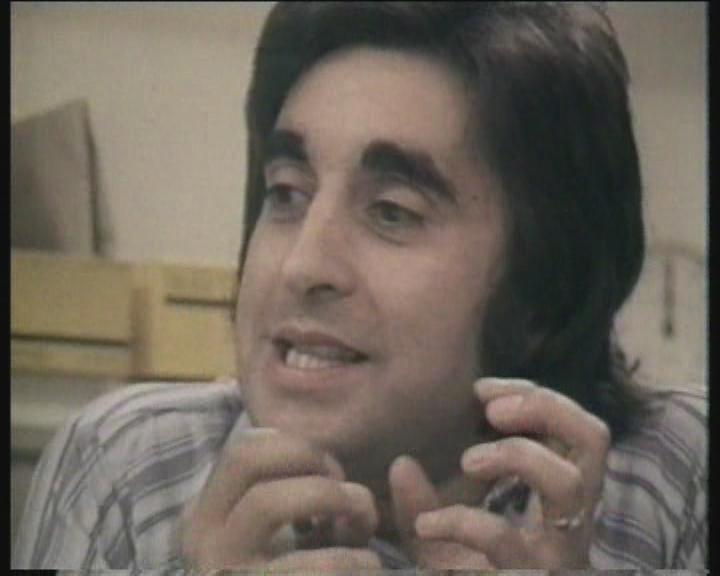 Kim Mukajee one of the partners in MMR
Kim Mukajee one of the partners in MMR
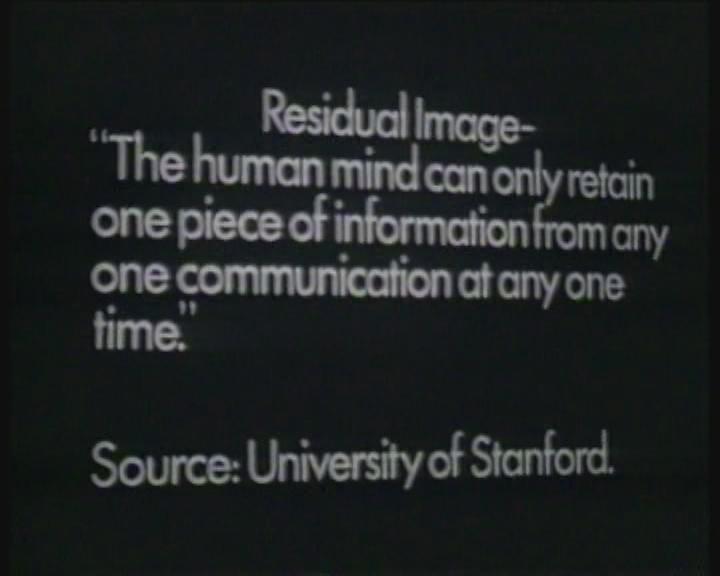
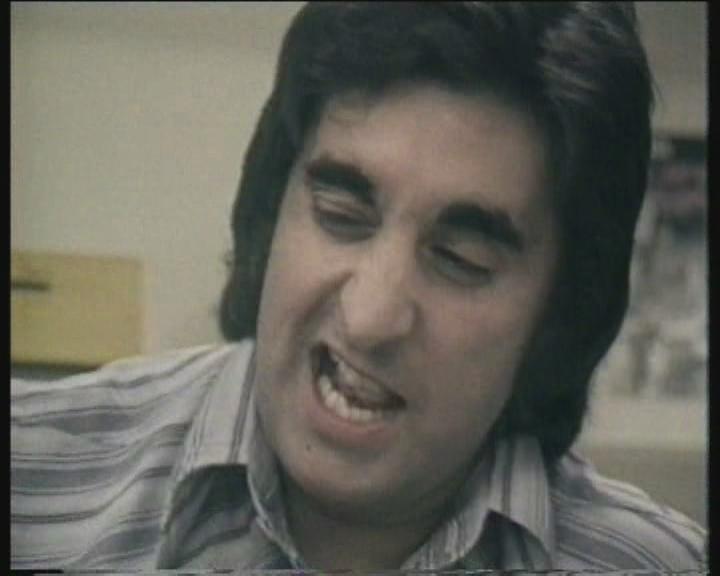
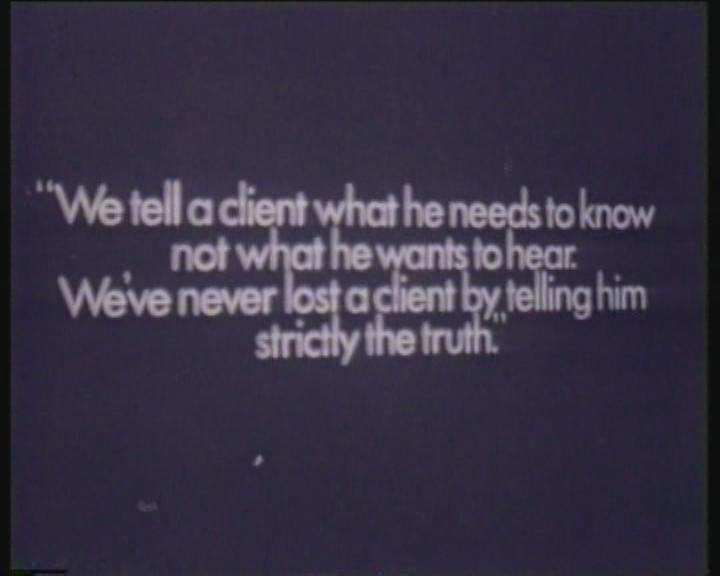
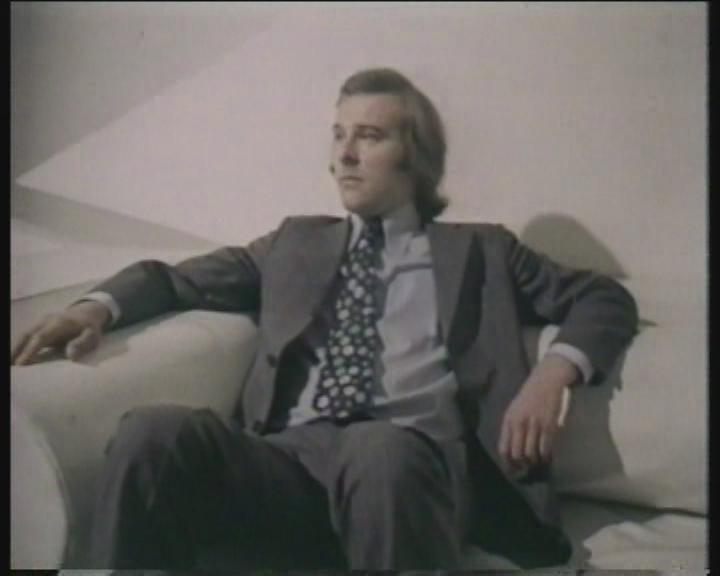 The owner of the Clan KIt Car
The owner of the Clan KIt Car
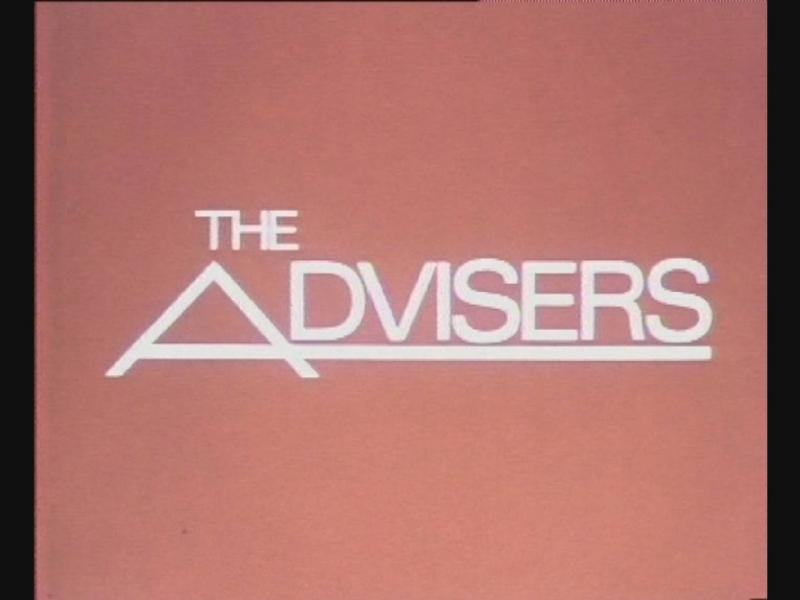 Title
Title
 Malcolm form the Milk Marketing Board at the beginning of the three day course
Malcolm form the Milk Marketing Board at the beginning of the three day course
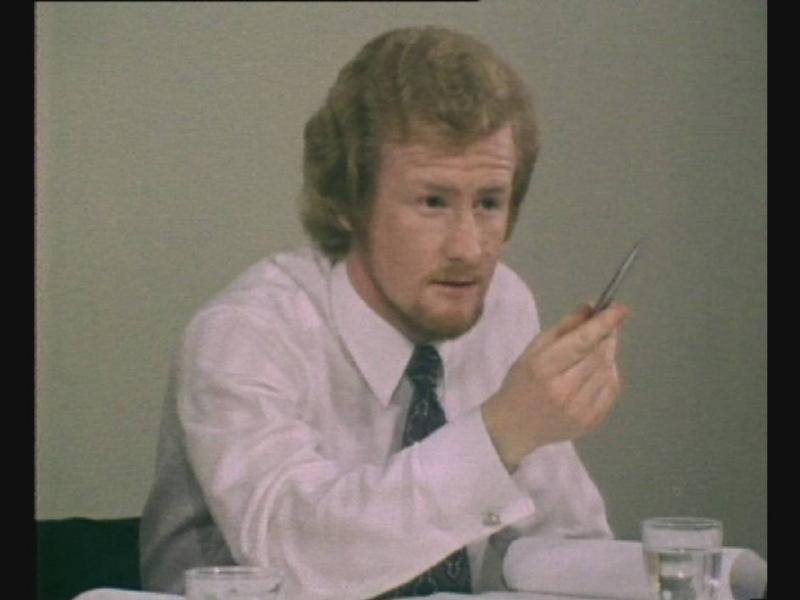 Malcolm in the middle of the course and getting better
Malcolm in the middle of the course and getting better
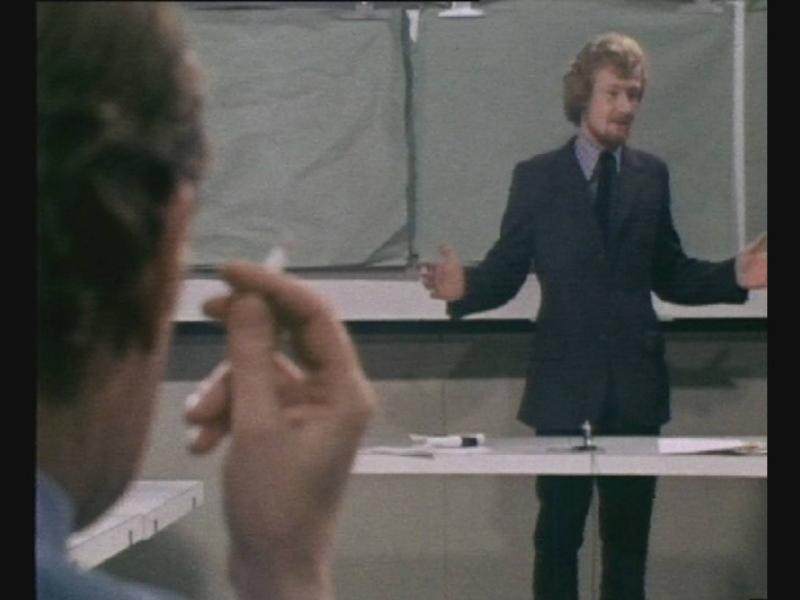 Malcolm, fluent, confident and a lot more interesting to listen to than when he began
Malcolm, fluent, confident and a lot more interesting to listen to than when he began
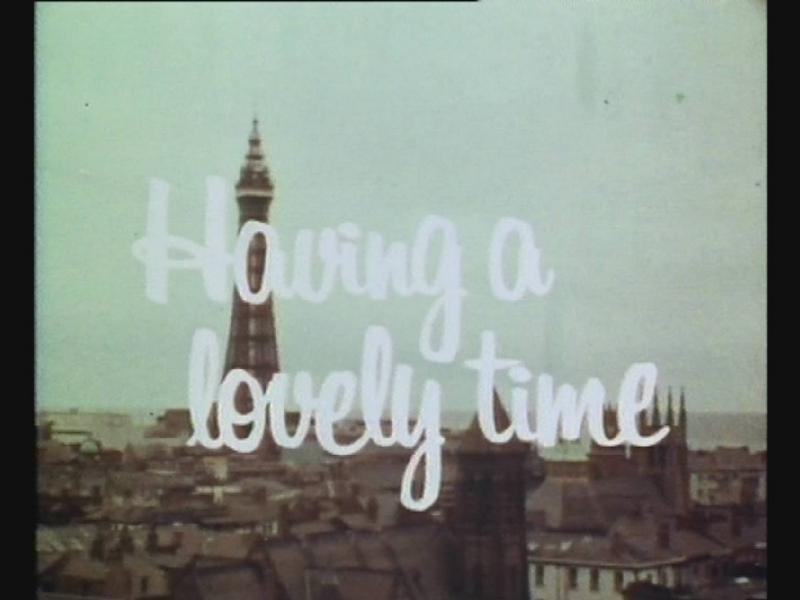 Title
Title
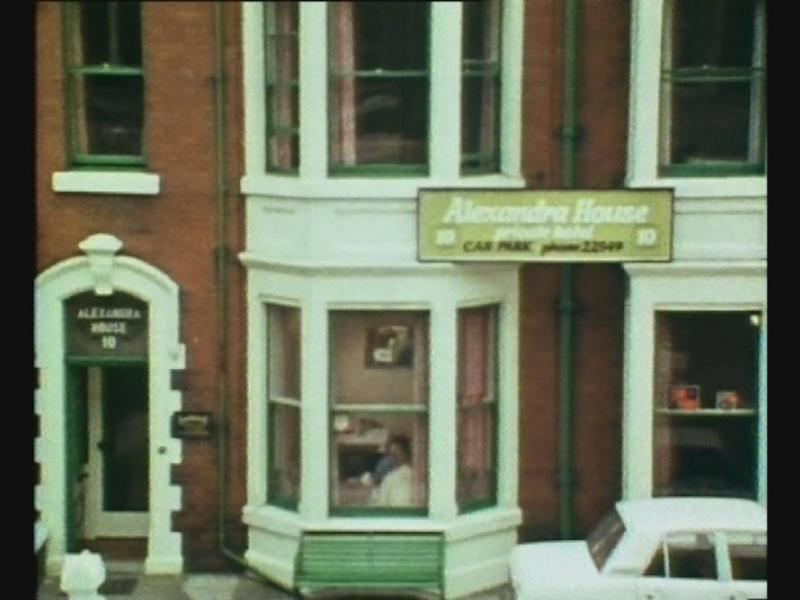 The boarding house
The boarding house
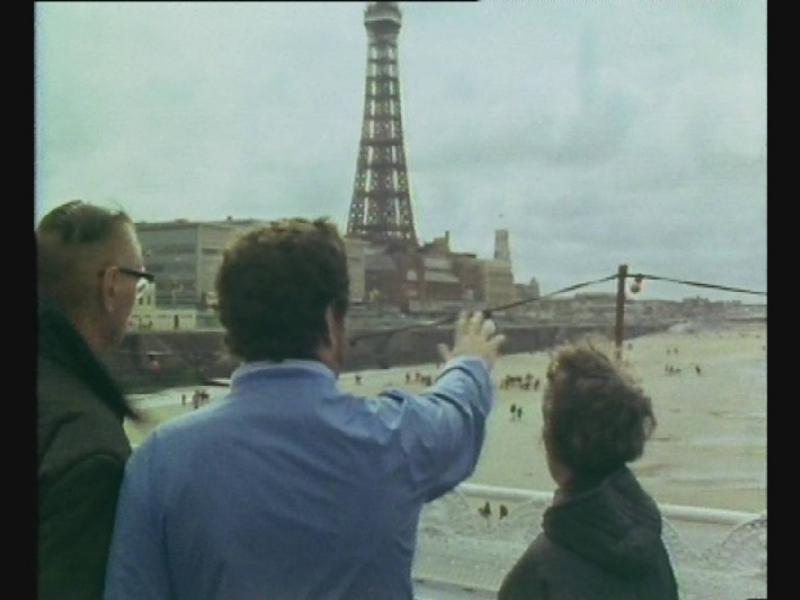 Colin Welland commenting on Blackpool and its legendary tower
Colin Welland commenting on Blackpool and its legendary tower
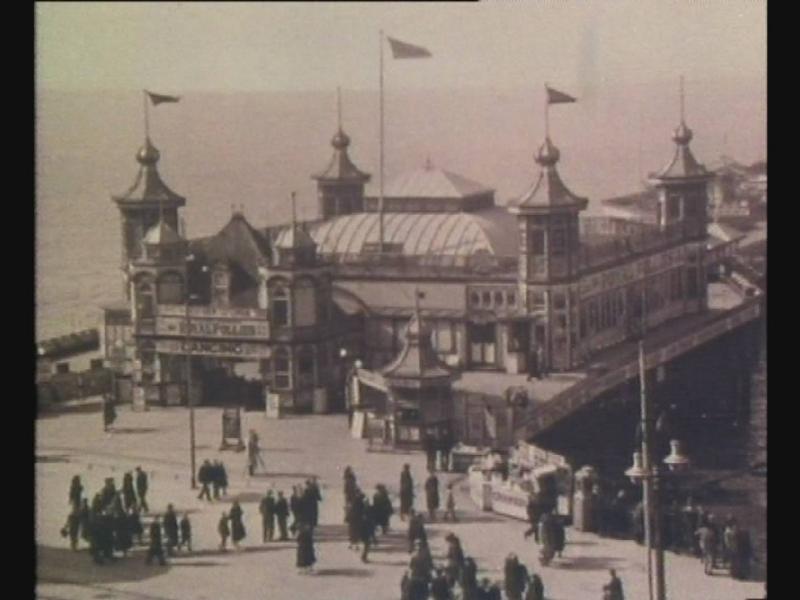 As the Pier used to be in late Victorian times
As the Pier used to be in late Victorian times
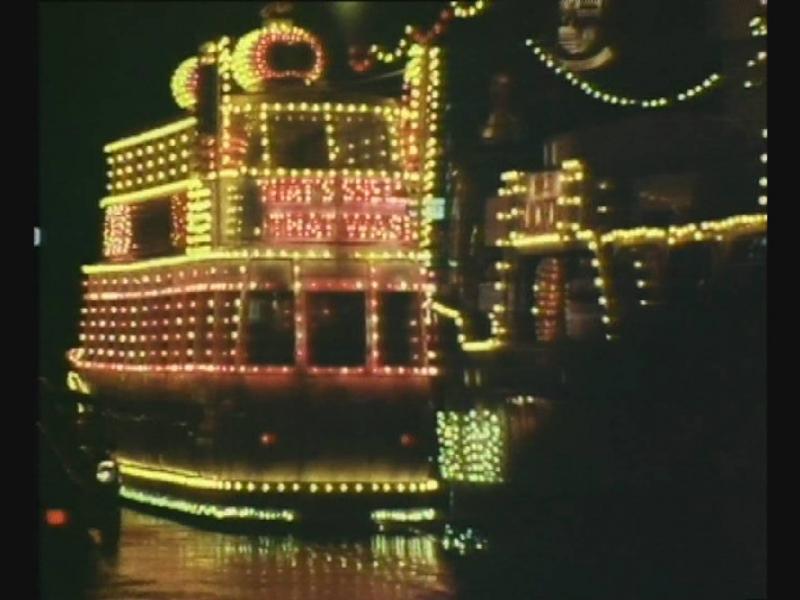 Blackpool Illuminations
Blackpool Illuminations
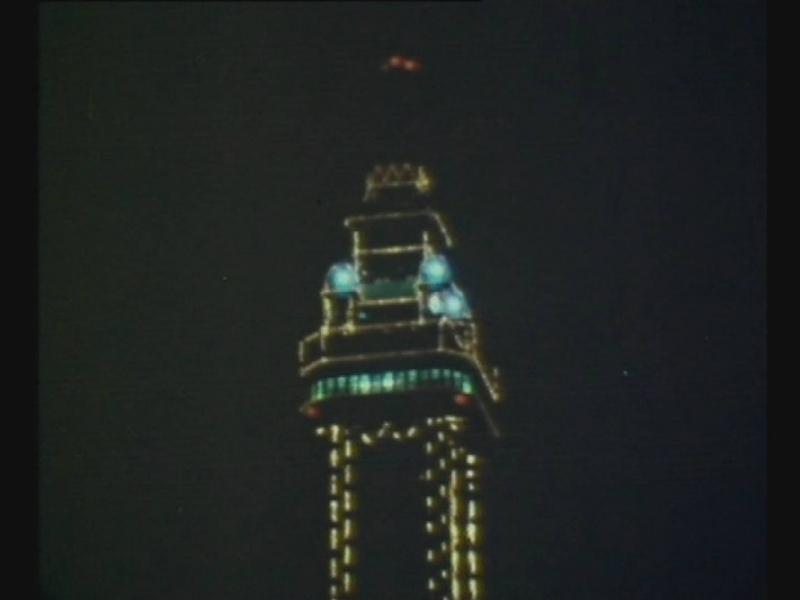 Blackpool Tower
Blackpool Tower
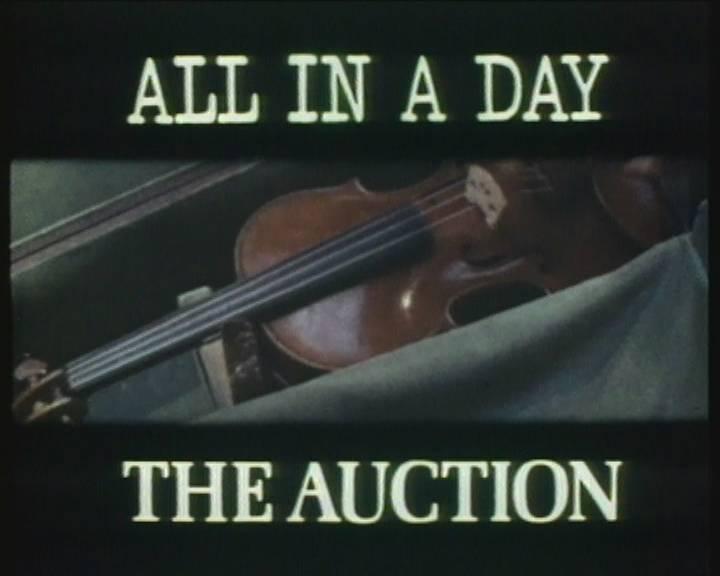 Title
Title
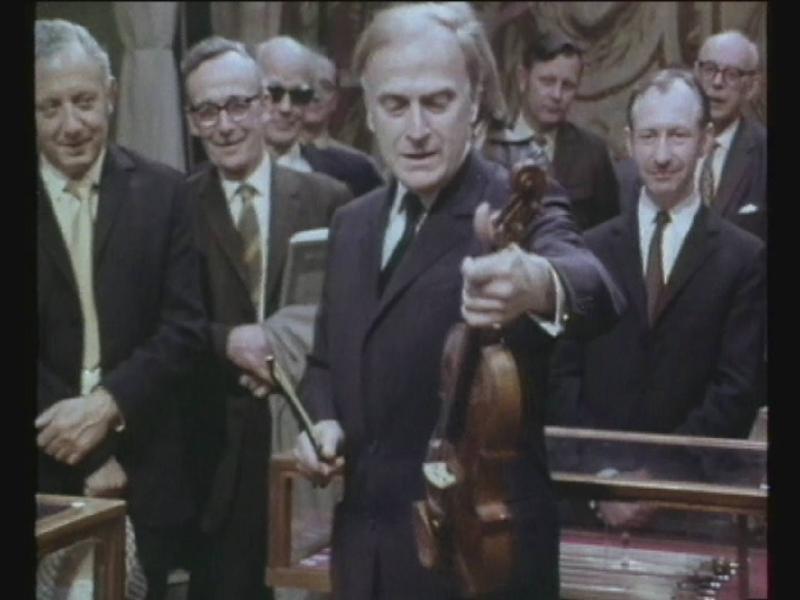 Yehudi Menuhin plays the Lady Blunt Stradivarius at the preview
Yehudi Menuhin plays the Lady Blunt Stradivarius at the preview
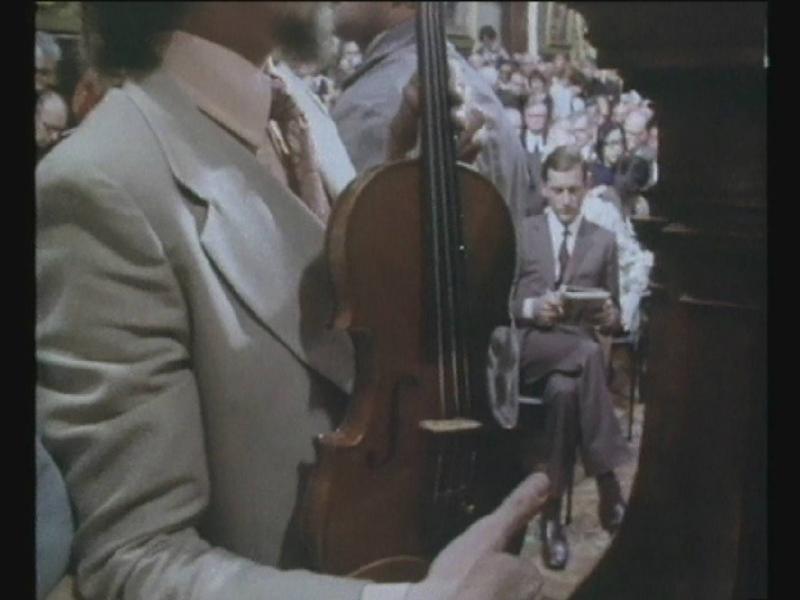 The Lady Blunt displayed in the Auction Room prior to the auction beginning
The Lady Blunt displayed in the Auction Room prior to the auction beginning
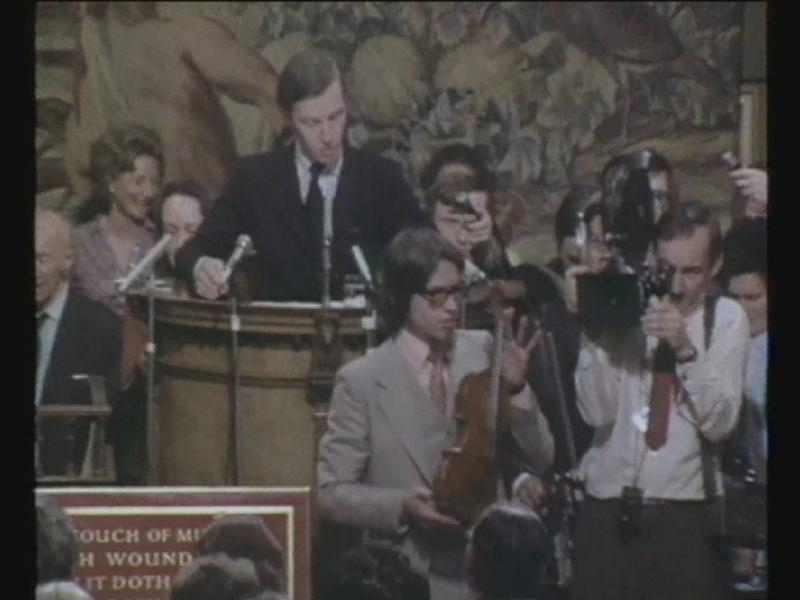 The Auction
The Auction
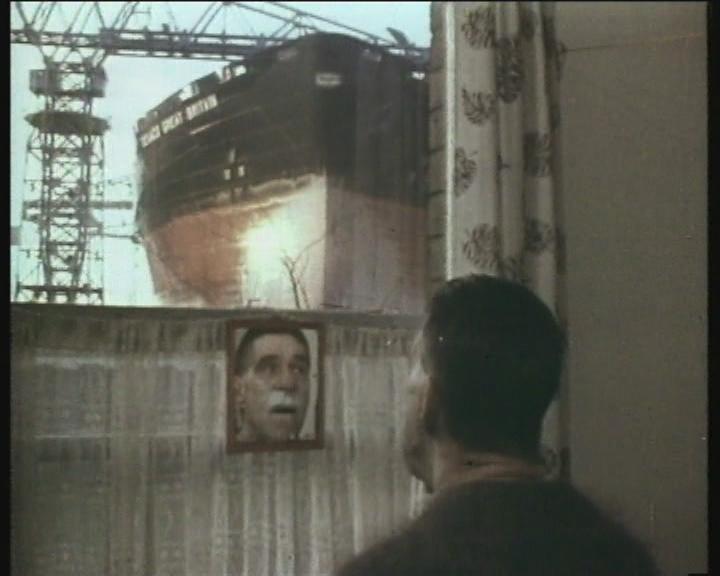 A shipyard worker
A shipyard worker
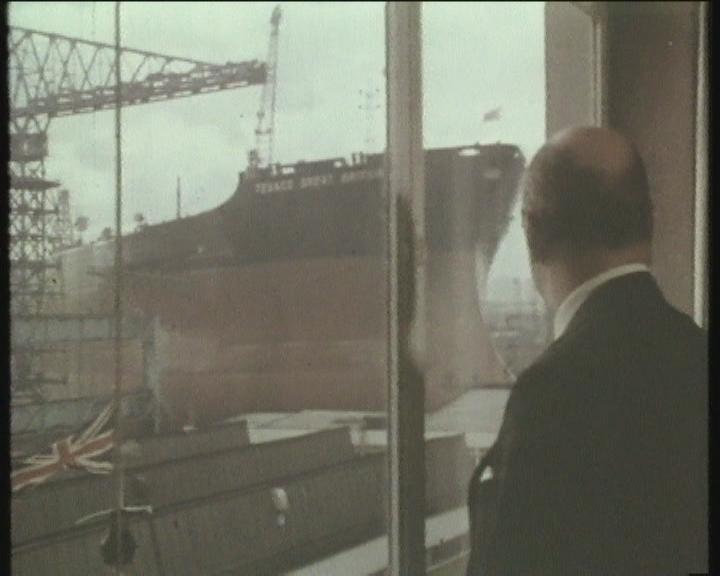 Sir John Hunter of Swan Hunter
Sir John Hunter of Swan Hunter
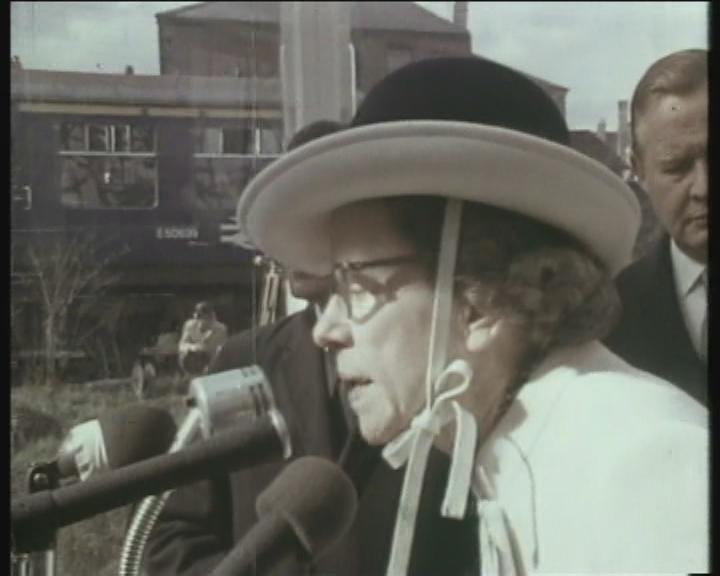 The wife of a vice president of Texaco
The wife of a vice president of Texaco
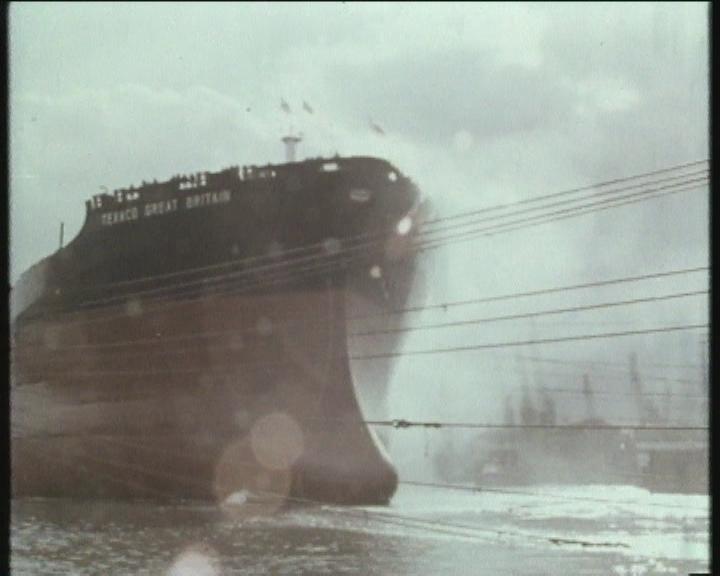 A successful launch
A successful launch
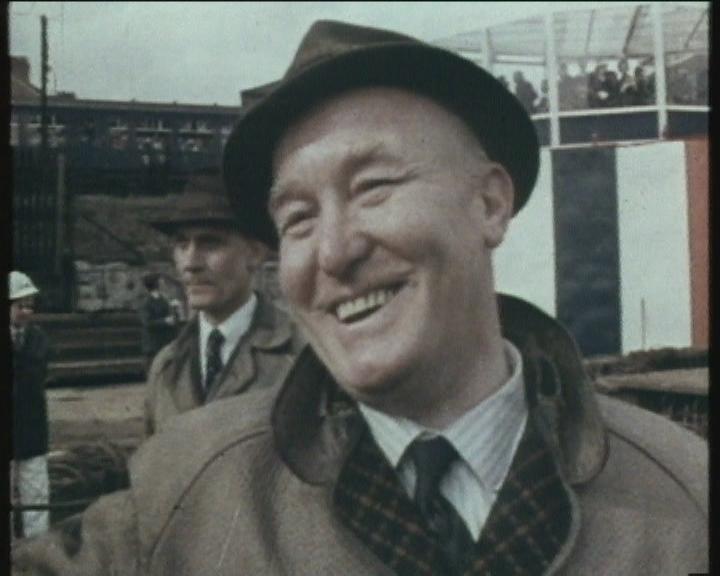 Relief for Charlie the foreman
Relief for Charlie the foreman
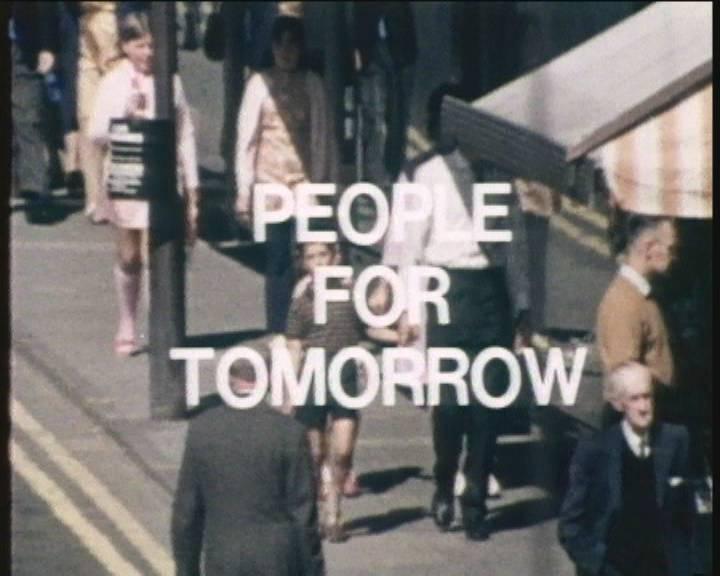 Title
Title
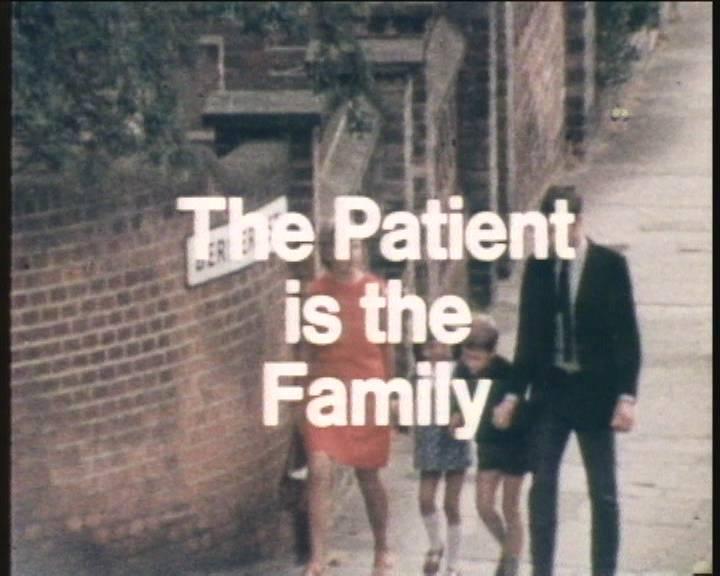 Title
Title
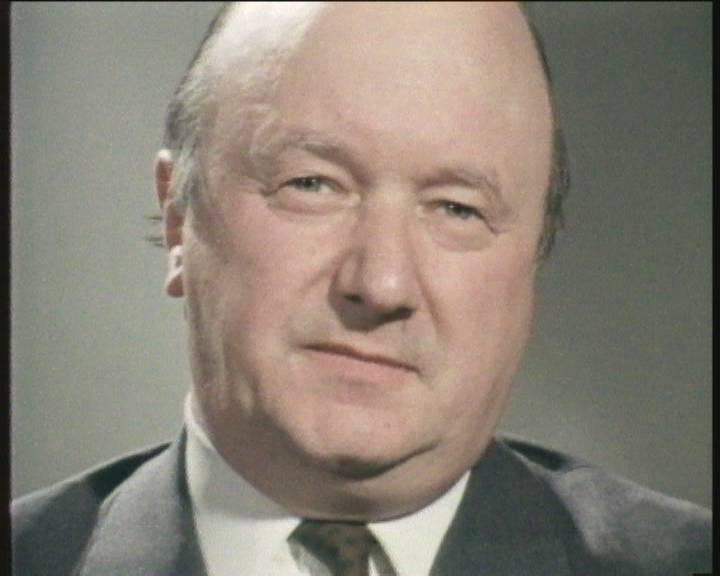 Dr John Howells,
Director of the Institute of Family Psychiatry
Dr John Howells,
Director of the Institute of Family Psychiatry
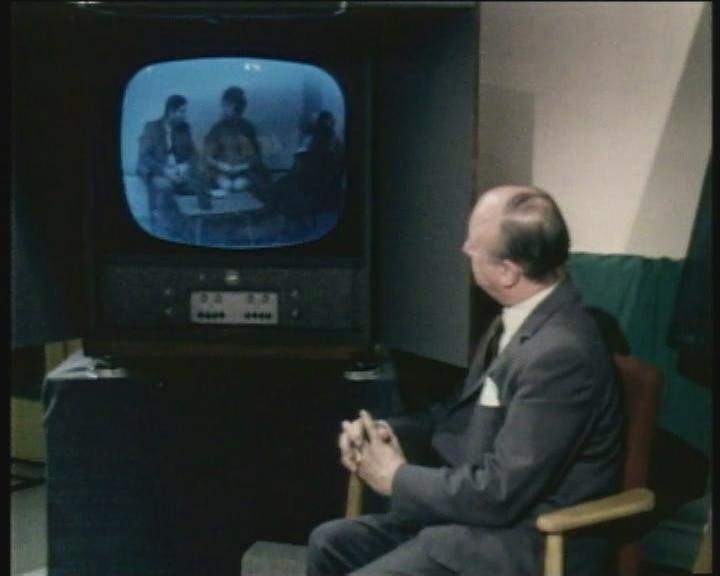 Dr Howells illustrates a case study
Dr Howells illustrates a case study